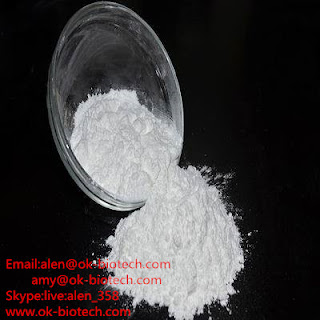With Eye Drug Data, Aldeyra Takes A Small Step Forward In Inflammation
With Eye Drug Data, Aldeyra Takes A Small Step Forward In Inflammation
Edit: Shenzhen OK Biotech Technology Co., Ltd. Date: 2016-03-01
With Eye Drug Data, Aldeyra Takes a
Small Step Forward in Inflammation

One of biotech’s biggest Wall Street winners on Monday was one of its smaller outfits—a Lexington, MA-based biotech called Aldeyra Therapeutics.
It’s no surprise if you haven’t heard of Aldeyra (NASDAQ: ALDX). The company went public two years ago with one of the smaller biotech IPOs in recent memory, netting $10.1 million. It has a miniscule market capitalization of less than $50 million and just 11 full-time employees, according to CEO Todd Brady (pictured).
But Aldeyra made headway on Monday, which is why its shares jumped 31 percent on the day. For the first time, it tested its scientific hypothesis in human patients. And for the first time, that theory led to positive results in a placebo-controlled trial. The data also give the company confidence that its ability to “trap” toxic aldehyde molecules with a drug could lead to inflammation-fighting medicines beyond the eye.
Specifically, Aldeyra said that a drug called NS2 succeeded in a mid-stage study of 100 patients with allergic conjunctivitis, a chronic condition that causes itchy and watery eyes. The drug had a statistically significant impact on those symptoms, compared to a placebo.
But these results, Brady explains, are more interesting for what they reveal about trapping aldehydes than for NS2’s potential as a treatment for allergic conjunctivitis. Aldeyra ultimately wants to find a new way to treat inflammatory diseases. Though it has started in the eye with drops as a testing ground, of sorts, for the concept, the big idea is to show that aldehyde-trapping drugs could treat broad, inflammatory conditions—perhaps, for instance, to supplement corticosteroids and allow for a lower dose and less troublesome side effects.
“That’s the future of this company,” Brady says. “We’ll start in the eye and go from there.”
To be clear, Aldeyra is a long way from proving it has a new inflammation fighter. Even after today’s stock jump, its shares still trade at $4.93 apiece, nearly 40 percent below its $8 IPO price of May 2014.
CEO Brady says Aldeyra has “proven that aldehydes are a real target, and that if you can reduce [them], it makes a clinically significant difference,” Brady says. “The question going forward is, how do we exploit [that]?”
Aldehydes are common metabolic byproducts. Normally, enzymes in the body chew them up and make acids or some other product, but when they erroneously build up in the body, it helps drive an inflammatory response. Aldeyra uses small molecules to bind to these aldehydes—Aldeyra calls its molecules aldehyde “traps”—and degrade them. In theory, that normalizes aldehyde levels and reduces inflammation.
Today’s data only show that an eye drop, taken four times a day over a 16-day span, appeared to have an impact on allergic conjunctivitis and was safe to use. It’s the first step of a fact-finding mission that’ll continue with a few other trials. Next quarter, Aldeyra aims to produce data from a mid-stage study for another eye disease, noninfectious anterior uveitis. That study will compare NS2 to steroids and show how it fares after six weeks as opposed to just 16 days. Aldeyra is also testing a skin-cream formulation of NS2 on a rare skin condition called Sjogren-Larsson Syndrome. Later on, it’ll move forward an injectable version that travels throughout the body, perhaps for SLS or a rare disease known as Succinic Semialdehyde Dehydrogenase Deficiency.
The answers from these trials will determine how broad the opportunity is for Aldeyra. For example, Brady says just because the company succeeded in a study in allergic conjunctivitis, doesn’t mean that’s where it’ll go next. It’s going to talk to experts in the field and try to find the right niche.
“It really depends on what our key opinion leaders think of the data in the future,” Brady says.
Aldeyra was formed in 2004 as Neuron Systems and was largely funded by venture funding from Domain Associates and Johnson & Johnson—just $18 million total—before it finally went public in 2014.
we provide high-quality steroids raw powder in China,and experienced in
exporting this kind product to worldwide about 20 years. if you
have intention to make finished products yourself and we could provide you
useful suggestions. contact me at : Email:alen@ok-biotech.com
exporting this kind product to worldwide about 20 years. if you
have intention to make finished products yourself and we could provide you
useful suggestions. contact me at : Email:alen@ok-biotech.com
Skype:alen@ok-biotech.com
Mobile: +86 852 64872529
 Www.ok-biotech.com
Www.ok-biotech.com



评论
发表评论